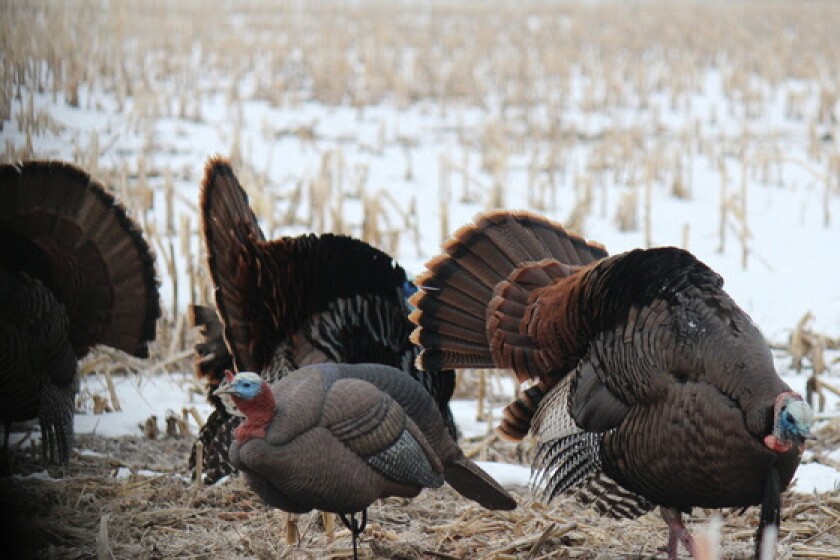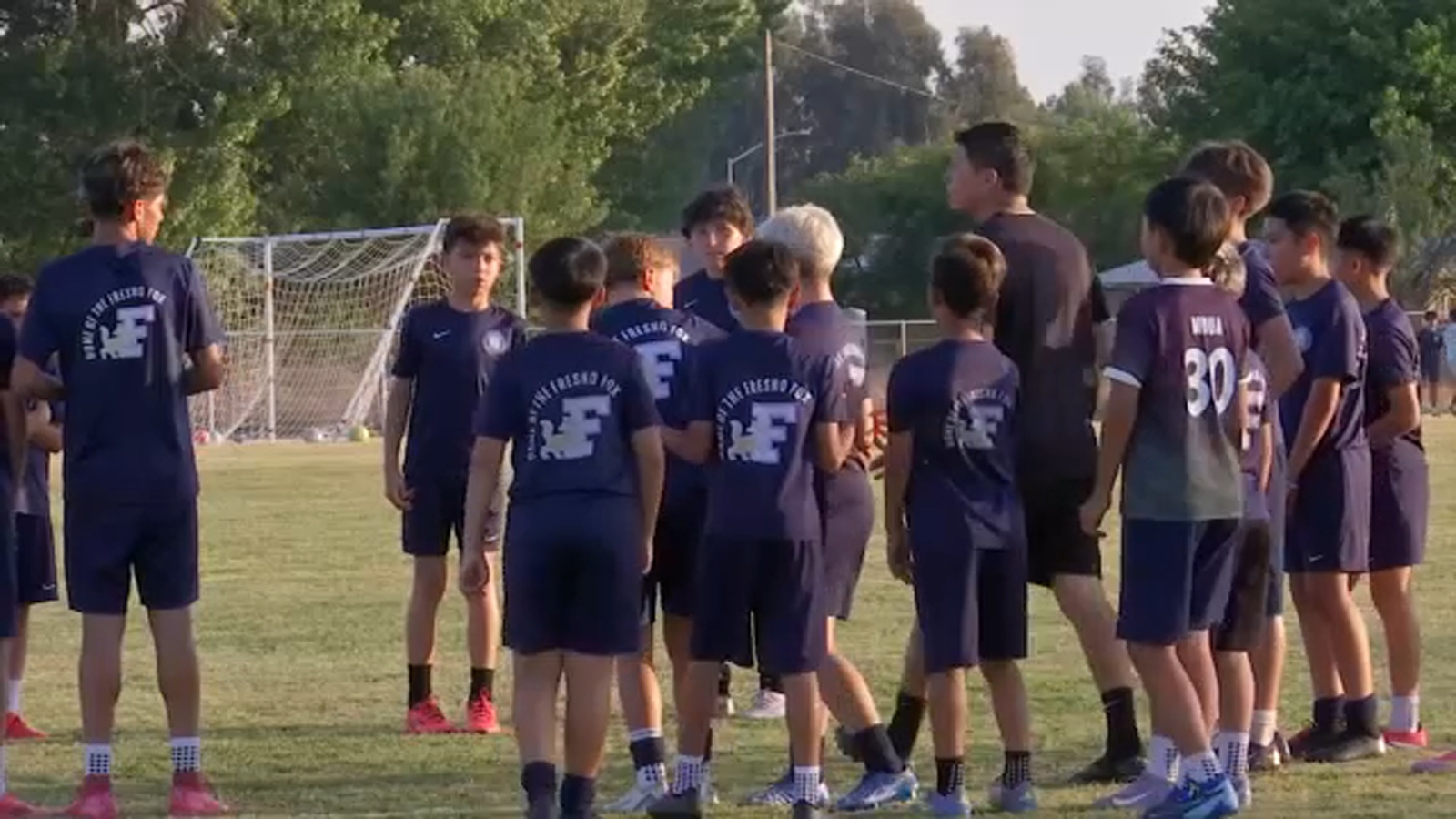On a crisp January afternoon in 2006, the Minnesota Department of Natural Resources released 14 wild turkeys from Goodhue County in southeast Minnesota at sites near Red Lake Falls and Thief River Falls. So began a multi-year relocation project to see if the birds could survive north of U.S.
Highway 2. Ross Hier, who was assistant area DNR wildlife manager in Crookston at the time, admits he was “at best neutral” about the prospects for success. But in response to pressure from a local chapter of the National Wild Turkey Federation, the DNR agreed to give the relocation effort a try.

While trap-and-transport relocation projects had long been a hallmark of the DNR’s turkey management strategy, the department had never moved birds farther north than Detroit Lakes. “We thought fishers would work on them, and we certainly thought winters would work on them,” said Hier, who retired in 2016. Today, turkeys provide a hunting opportunity in northwest Minnesota that no one could have imagined 25 years ago.
This year’s Minnesota turkey season opened April 16, with “A through F” hunting time periods continuing through May 31. “It’s astounding,” Hier said. “I don’t think in my wildest dreams I could have thought there’d be so many turkeys around here 19 years later.
” All told, the DNR released 59 hens and 19 males in northwest Minnesota in 2006 and 39 hens in 2007. Additional birds were released a year later in Cass, Clearwater, Crow Wing, Hubbard, Marshall, Norman, Pennington, Polk and Red Lake counties. Chad Parent, who was a UND graduate student at the time, conducted the fieldwork portion of a two-year research project to monitor relocated turkeys fitted with tracking devices at the sites near Red Lake Falls and Thief River Falls.
The survival rate that first year was very low, he recalls. “It was a pretty cool study for the time,” said Parent, who now is survey coordinator for the North Dakota Game and Fish Department in Bismarck. “It was the most northern release of wild turkeys ever recorded in the literature.
After that first year where we observed really low survival, I remember there being a lot of discussion about the northern limitations of turkeys, given the severe winters. But, in hindsight, over the past 20 years, we’ve learned that turkeys are remarkable generalists.” To say wild turkeys now are abundant in northwest Minnesota might be an understatement.
While the relocation effort extended only as far north as New Maine Township in Marshall County, wild turkeys today can be found all the way to the Manitoba border and east into forested areas of northern Minnesota. “They’re in every county (of Minnesota) now, I’m sure,” Hier said. Most likely, the turkeys thriving today across northern Minnesota are descended from those early releases, managers say.
“I think that’s a safe assumption,” said Doug Franke, area DNR wildlife manager in Thief River Falls. Like Hier, Franke also was involved with those early releases. “There was some pretty significant mortality the first winter because they were still trying to figure things out in a new environment,” Franke said.
“But after that, they were off to the races and they’ve only been on an upward trajectory since. We continue to see them in new areas even today.” Wild turkeys, which are both adaptable and prolific, will eat almost anything, Franke says; he once heard of a bird found with the casing of a .
30-06 bullet in its crop. “They’re resilient,” he said. “They’ll sit in an aspen tree and (eat buds) like a ruffed grouse will.
The cold does not affect them at all. It’s whether they can dig down to food or not is what limits them, really. They’re powerful birds.
” Besides his initial skepticism about wild turkeys surviving in northwest Minnesota, Hier says he was concerned about the potential for depredation problems. The early releases coincided with peak enrollment in the Conservation Reserve Program, a federal initiative that pays landowners to take marginal land out of production and establish wildlife habitat. “We had more deer than we’d ever had in northwest Minnesota – ever,” Hier said.
In addition, more farmers were growing corn, and reports of problem bears were becoming more frequent. “I was very concerned that we’d just be getting phone calls and more phone calls of turkeys in cattle (feed) in the winter,” Hier said. “Some of that is happening, but not the level that I predicted or in my own mind I was concerned about.
” Franke doesn’t remember the exact year, but wild turkey populations eventually grew to the point where the DNR offered hunting seasons in northern Minnesota north of Highway 2. “It took a little bit of time for people up here to really catch on (to turkey hunting),” Franke said. “It’s still not like the southern part of the state, where that tradition has been passed along, but I’ll say there are a lot more people – probably double the people – that there were 10 years ago hunting up here now.
” Aaron Lefor of Greenbush, Minnesota, has been hunting turkeys close to home for the past few years and says he’d like to see the DNR allow hunters to take more than one tom turkey during the spring season or one bird that’s either a tom or a hen in the fall. “As a kid, seeing a turkey around here was a rarity,” Lefor said. “People I know in the community say, ‘You hunt turkeys, come to our property.
’ They’re like, ‘We just want them gone.’ They’re all over. “If you would have asked me when I was a senior in high school back in ’98 if there’d be turkey hunting up here, I’d be laughing,” he added.
“It’s amazing how in 10-plus years they’ve adapted to northwest Minnesota with all the weird weather we can get in March and still survive.” This spring, Lefor says wild turkeys even showed up on trail cameras on family hunting property south of the Carp Swamp in the Beltrami Island State Forest area south of Baudette, Minnesota. “We had three turkeys on our cameras,” he said.
“We’ve seen turkeys in the past, I’ve seen turkey tracks, but this is weird, this far east into the wooded area.” The population has “just exploded” since the DNR introduced them, Lefor says. “I’ve seen it preseason out scouting the property I hunt for turkeys,” he said.
“I counted well over 100 turkeys in the field.” That doesn’t mean hunting them is a slam-dunk, Lefor says. “You’ve got to know what you’re looking for,” he said.
”This year, I went out opening day on Wednesday (April 16). I put a hay bale blind out, sat in it, had them all timed out when they’d be in this field. “Nope, they didn’t show up.
Went back out in the afternoon, here they come.” A cousin hunting with him shot his first turkey, Lefor says. The big tom weighed “just over” 25 pounds with an 11-inch beard (described by the DNR as a “feathered appendage protruding from the breast that is generally found only on males”) and 11⁄2-inch spurs.
“I said that’s about as big of a bird as I’ve seen in a while,” Lefor said. Hier, who helps the DNR with its spring prairie chicken counts, recalls being in the field early one spring morning when he came across a parked pickup with the tailgate open and turkey hunting gear in the back. After checking a nearby prairie chicken lek, he drove back toward the parked truck and saw two young guys with “big beautiful toms over their shoulder” walking back toward the pickup.
He congratulated the pair, who were “all smiles,” and asked if they were students at the nearby University of Minnesota Crookston. “They smiled and said, ‘We’re juniors at Red Lake Falls and we ought to get to school,’ ” Hier recalled with a laugh. “And I thought, ‘That’s how life should be right there.
’ These young kids, they can go hunting before class.” Not that many years ago, they’d have to travel south at least to Detroit Lakes, and likely farther. “That’s pretty cool,” Hier said.
“You can have a hunting opportunity right in your backyard, basically.”.
Sports

Despite initial skepticism by some wildlife managers, wild turkeys today thrive in northwest Minnesota

Today, turkeys provide a hunting opportunity in northwest Minnesota that no one could have imagined 25 years ago.















